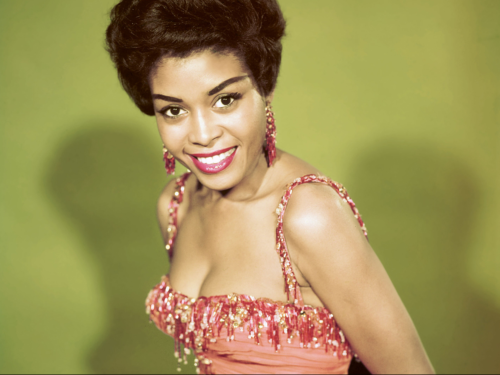When my editor asked me to write a piece on the jazz singer, Abbey Lincoln, I immediately felt overwhelmed. Confession…I am not a big jazz aficionado, so writing about anything related to this genre would take me completely out of my comfort zone. I was not familiar with Abbey’s life story at all but decided to take on the assignment; I am so glad I did.
Abbey’s given name was Anna Marie Wooldridge. She was born on Aug. 6, 1930, in Chicago and was the 10th of 12 children. She was also the granddaughter of Charles Coffey who was a slave until age 14. Abbey’s family would eventually move to a farm in Calvin Center, Michigan and it was there where her interest in music began. The family had a piano, and she developed an interest in music at an early age, when she began singing in school and church choirs. Even though she was not the best student, the jazz music that was played in her home helped bring her inner peace. She listened to jazz greats such as Billie Holiday, Dinah Washington, and Sarah Vaughan, and credited them for teaching her how to sing with conviction.
When Abbey moved with her mother to Kalamazoo, Michigan at age 14, she began singing with local bands while also still working as a maid. After winning an amateur talent show at age 19, she then moved to Los Angeles, where she sang in nightclubs. In 1952, Abbey moved to Honolulu for a year where she would perform under various stage names–Anna Marie Wooldridge, Gaby Lee Wooldridge, and Gaby Wooldridge.
By 1954, Abbey would return to Los Angeles where she landed a gig at the famed French nightclub, Moulin Rouge. She met lyricist Bob Russell, who later became her manager and who would also rename her Abbey Lincoln.
In 1956, Abbey recorded her first album, Abbey Lincoln’s Affair: A Story of a Girl in Love. The following year, she moved to New York City and landed a job at the legendary jazz club, the Village Vanguard where she met the man who would be her husband, Max Roach, a drummer, composer and bebop innovator. Max introduced Abbey to New York’s jazz scene and also shepherded her political awareness on the importance of activism.
During the turbulent civil rights movement years, Abbey, along with many of her fellow jazz musicians like Charles Mingus, Oscar Brown, Jr. and John Coltrane, supported the battle against the racial injustices of the times and used their music to express their anger. The performers would participate in fundraising concerts that would benefit civil rights organizations like CORE and the NAACP.
Abbey, who was launched as a seductive chanteuse, also tried her hand at acting. She pursued a movie career, and her first film was The Girl Can’t Help It (1956) starring Jayne Mansfield. In the movie, Abbey sported a gown once worn by Marilyn Monroe in the famous film, Gentleman Prefer Blonds. In the June 1957 issue of Ebony Magazine, the publication featured an image of Abbey wearing that very same dress Monroe had worn in her film. Abbey was featured on the cover of Ebony magazine in 1957 as “The Girl in Marilyn Monroe’s Dress.” Ebony also included a full paragraph which divulged Abbey’s measurements.
Abbey saw the dress as an exploitation of her body, rather than a symbol of arguably the biggest movie star of all time. She thought her photo in the magazine would undermine her career. Abbey decided she couldn’t handle the backlash involving the dress and did something to ensure she would never have to wear it again. She tossed the garment into an incinerator as a means of protest.
In the 1960s, Abbey had several film roles, starring in the independent film Nothing But a Man, a story about a black railroad worker in the South in love with a preacher’s daughter, and then opposite Sidney Poitier in For Love of Ivy in 1968.
After Abbey’s marriage to Roach ended in 1970, she moved back to California and immersed herself in art. Even though the songstress was struggling financially during that time, singer Miriam Makeba offered her the chance to visit Africa. Abbey visited Africa in 1972 and then again, three years later, where she was given the names Aminata and Moseka. The experience inspired her to write more songs and stories, and to consider herself a storyteller.
In 1973, she signed with the Verve label and would go on to record nine albums with them. When The World Is Falling Down was released in 1990, the record propelled Abbey back to stardom. In 2007, Abbey Sings Abbey, which featured reinterpretations of her own compositions was her last recording. Abbey also acted again for the first time in decades, with a brief role in the 1990 Spike Lee film Mo’ Better Blues.
In 2003, the National Endowment for the Arts recognized her with its Jazz Masters Award, the nation’s highest jazz honor. Abbey underwent open-heart surgery in 2007. She lived on Manhattan’s Upper West Side, in an apartment filled with her own paintings and drawings.
The woman who echoed the musical stylings of her idol Billie Holiday and who will always be remembered for her raspy alto voice, and intensely passionate delivery, passed away on August 14, 2010, in New York City; she was 80 years old.
